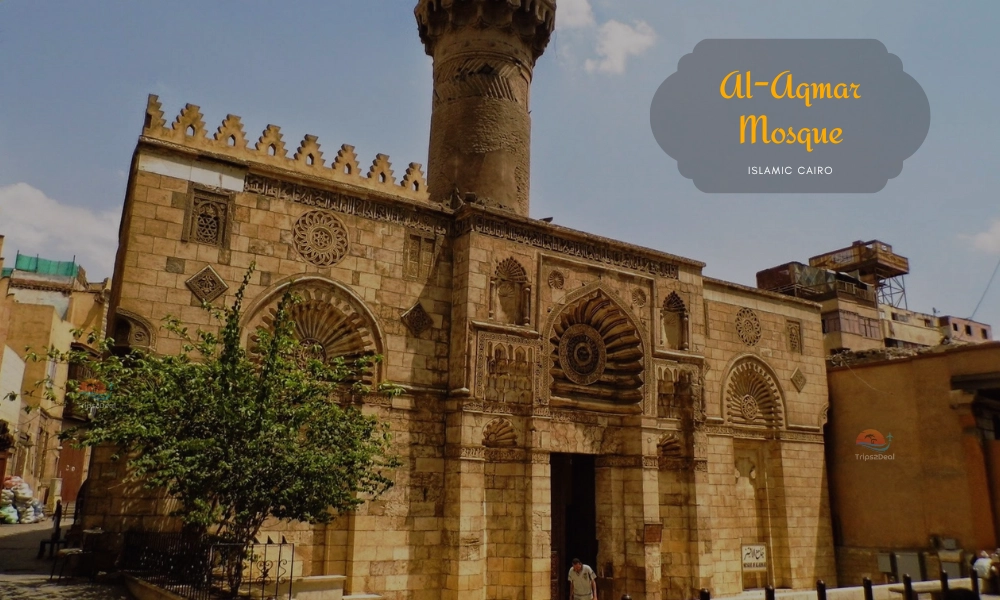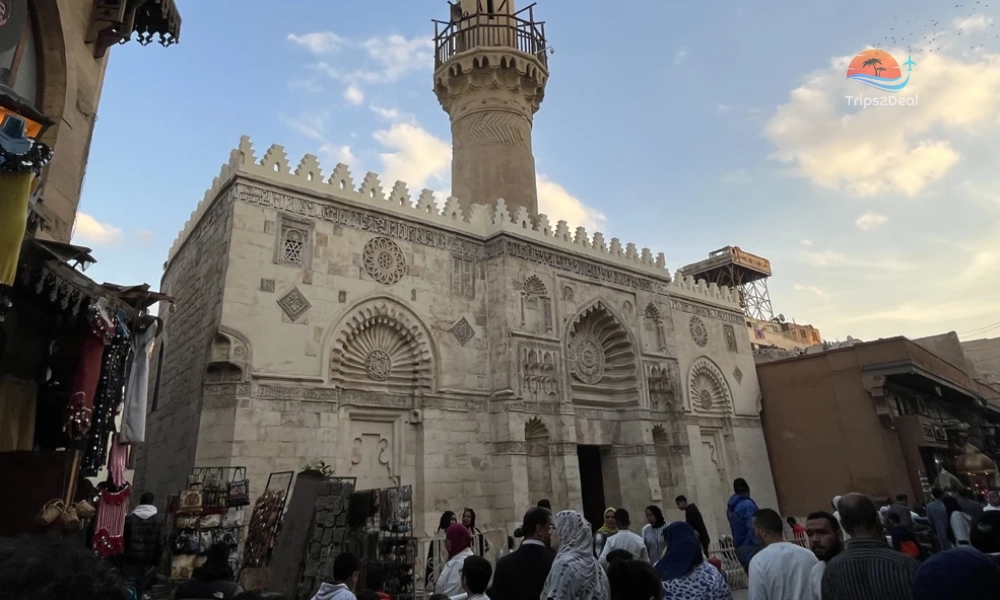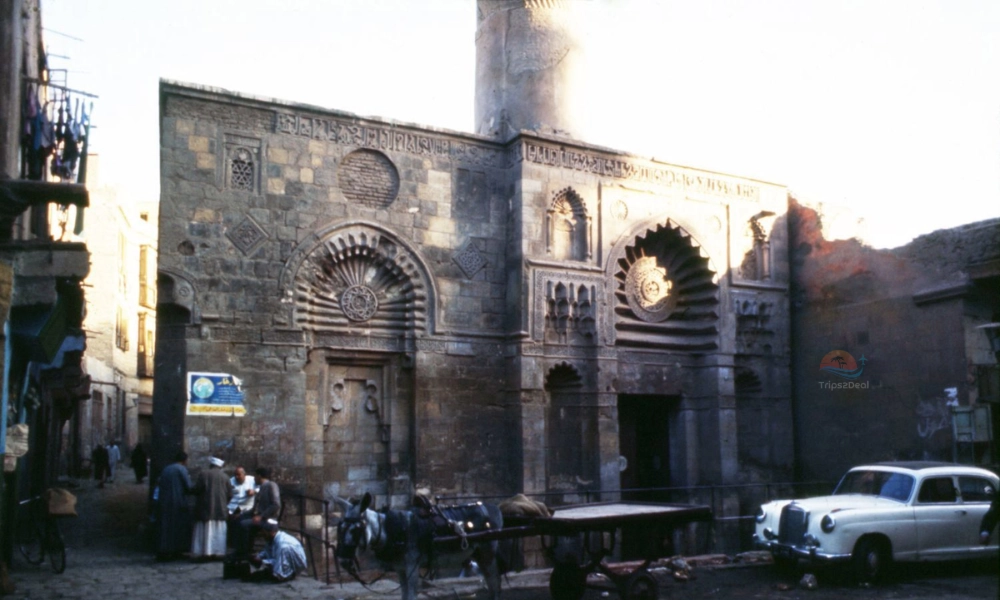Blogs

Al-Aqmar Mosque
Do you want to clean your heart and make your soul pure? Visit Al-Aqmar Mosque, situated on the well-known Al-Muizz Street, located in the middle of Islamic Cairo. This is a remarkable symbol and a memory of the grandeur of the Fatimid Caliphate. In the 19th century, this Mosque came an existence, demonstrating the unmatchable architecture of medieval Egypt. The stone-carved facade, creative urban placement, and glorious iconic elements not only make the mosque a religious site but also present a legacy and political ideology of Fatimid spirituality.
Table of Contents
Unique Architecture of Al-Aqmar Mosque
Religious and Cultural Significance During the Fatimid Era
Extensive Modern-Day Restoration Efforts
Location of Al-Aqmar Mosque:
This mosque was commissioned by Vizir al-Ma’mun al-Bata’hi during the ruling of Caliph al-Amir bi-Ahkam Allah in 1125 AD. “Moonlit” means that Al-Aqmar truly represents the culture and legacy, and is a more soothing and calming worship place. This Mosque depicts a statement of strength and faith. This was led by Fatimid Rulers, who were following Shi'a Ismaili Islam, and had a strong influence on the community spiritually and politically.
Key Facts:
- Era: Fatimid Caliphate (969–1171 AD)
- Location: Al-Muizz li-Din Allah Street, Cairo
- Purpose: The Friday congregational mosque and a symbol of Fatimid religious authority
It was a showcase of Fatimid religious architecture, revealing that it is not a dedication only, but actually a strategic urban and ideological perspective.
Unique Architecture of Al-Aqmar Mosque
Al-Aqmar mosque is highly appreciated because of its unique architectural landmarks, particularly its street-facing, integrated facade. The interesting fact, this is the very first Islamic architecture, which is why millions of people visit this scholarly site. The very first mosques were built beautifully in the direction of Qiblah, towards Mecca. But, this mosque has distinct architecture, its entrance is aligned towards the street ideally, without compromising prayer direction inside.
Noteworthy Architectural Features:
- Street-Aligned Façade: A breakthrough in Cairo’s mosque design, making it visually accessible to passersby and harmonized with urban planning.
- Stone-Carved Decorations: Intricate geometric patterns, floral motifs, and muqarnas (stalactite-like ornamentation) reflect the pinnacle of Fatimid stonework.
- Kufic Inscriptions: Bold Arabic script carved into the stone quoted Qur'anic verses, emphasizing the mosque's spiritual purpose and the legitimacy of the Fatimid rulers.
- Symbolism in Design: The sun and moon motifs, circular medallions, and symmetrical layouts symbolized cosmic harmony and divine order, aligning religious authority with universal balance.

Strategic Urban Placement
It is situated on Al-Muizz Street, the remarkable focus of the center of medieval Cairo, and is an ideal option. This street is aligned with iconic palaces, mosques, and public spaces. As a political and religious artery, this makes Al-Aqmar’s existence a strong and splendid.
Importance of Urban Positioning:
- Served as an anchor for community gatherings and religious processions.
- Functioned as a visible representation of Fatimid rule in a diverse religious environment.
- Enhanced the integration of mosque architecture with city life, setting a precedent for future Islamic buildings.
Religious and Cultural Significance During the Fatimid Era
As this mosque was built during the rule of Shi’a Ismaili, this mosque promotes the separate religious identity of the Fatimids. They majorly find themselves different from the Sunni majority in Egypt. But the Al-Aqmar mosque is a symbol of faith and strength for worship and a stage for public speaking and preaching Islam.
Role in the Fatimid Community:
- Used for Friday sermons (khutbahs) affirming Fatimid legitimacy.
- Venue for religious celebrations, including Eid processions and Fatimid festivals.
- Taught Shi’a doctrines and hosted gatherings for scholars and officials.
Ottoman and Mamluk Periods
Al-Aqmar has undergone many renovations to its architecture over the centuries, especially during the Mamluk and Ottoman empires. Meanwhile, many other mosques have restructured or reshaped during his reign, but Al-Aqmar Mosque’s architecture remained the same and maintained the Fatimid essence.
Key Changes and Continuity:
- Minor structural reinforcements were made under Mamluk rulers to preserve its stability.
- The Ottomans maintained their function as a mosque, showing respect for its historic value.
- Most of the original inscriptions and decorative elements survived these transitions.
This existing and remaining architecture enhances the continuous cultural and religious significance of Al-Aqmar across reigns and centuries.

Extensive Modern-Day Restoration Efforts
The pollution and environmental-enemy factors had been taken into consideration in this ancient mosque by the late 20th century. After considering and knowing its global worth, both the Egyptian organization and international platforms committed to handling the extensive restoration efforts.
Recent Conservation Projects:
- The Aga Khan Trust for Culture led a major restoration in the 2000s.
- Focus areas included cleaning the façade, replacing eroded stone, and restoring muqarnas details.
- Interior spaces were rehabilitated to resume community worship and accommodate cultural tourism.
In this century, Al-Aqmar is not all about a worship spot, but a symbol that ideally represents the blend of heritage and legacy.
Interesting Tourism Spots in Islamic Cairo:
The one who is visiting Cairo, Egypt, exploring the Al-Aqmar Mosque is the most admired spot, for worship and discovering the ancient architecture. Besides other symbolic icons, the Sultan Qalawun Complex, Bayt al-Suhaymi, and Al-Hakim Mosque, this mosque is situated on Al-Muizz Street among them.
Visitor Information:
- Opening Hours: Typically open from early morning until evening; check locally for prayer-time closures.
- Accessibility: Easily reachable by foot or taxi; nearest metro is Ataba Station.
- Nearby Attractions: Khan el-Khalili Bazaar, Al-Hakim Mosque, and Coptic Cairo are a short drive away.
- Guided Tours: Highly recommended to understand the rich symbolism and Fatimid context.
Among the broader and wider narrative of Egypt’s medieval urban and scholarly legacy, it comes under Cairo's UNESCO-designated Islamic heritage zone.
Wrapping Up:
Whether you’re a traveller, an architecture lover, a history lover, or a knowledge seeker, visiting Al-Aqmar Mosque makes it your preferred spot, because it is a distinct chapter in Egypt’s religious, political, and artistic history. This is a spot where faith, strength, design, and architecture speak aloud, and history becomes brighter. This innovative architecture and landmark symbol of Fatimid tenure held resilience even during the rule of the Ottomans and modern times. This Mosque highlights the clear and distinctive difference between the past and the present.





